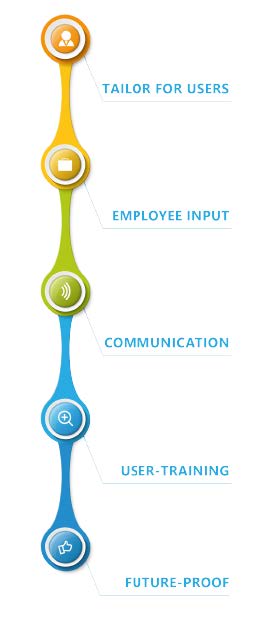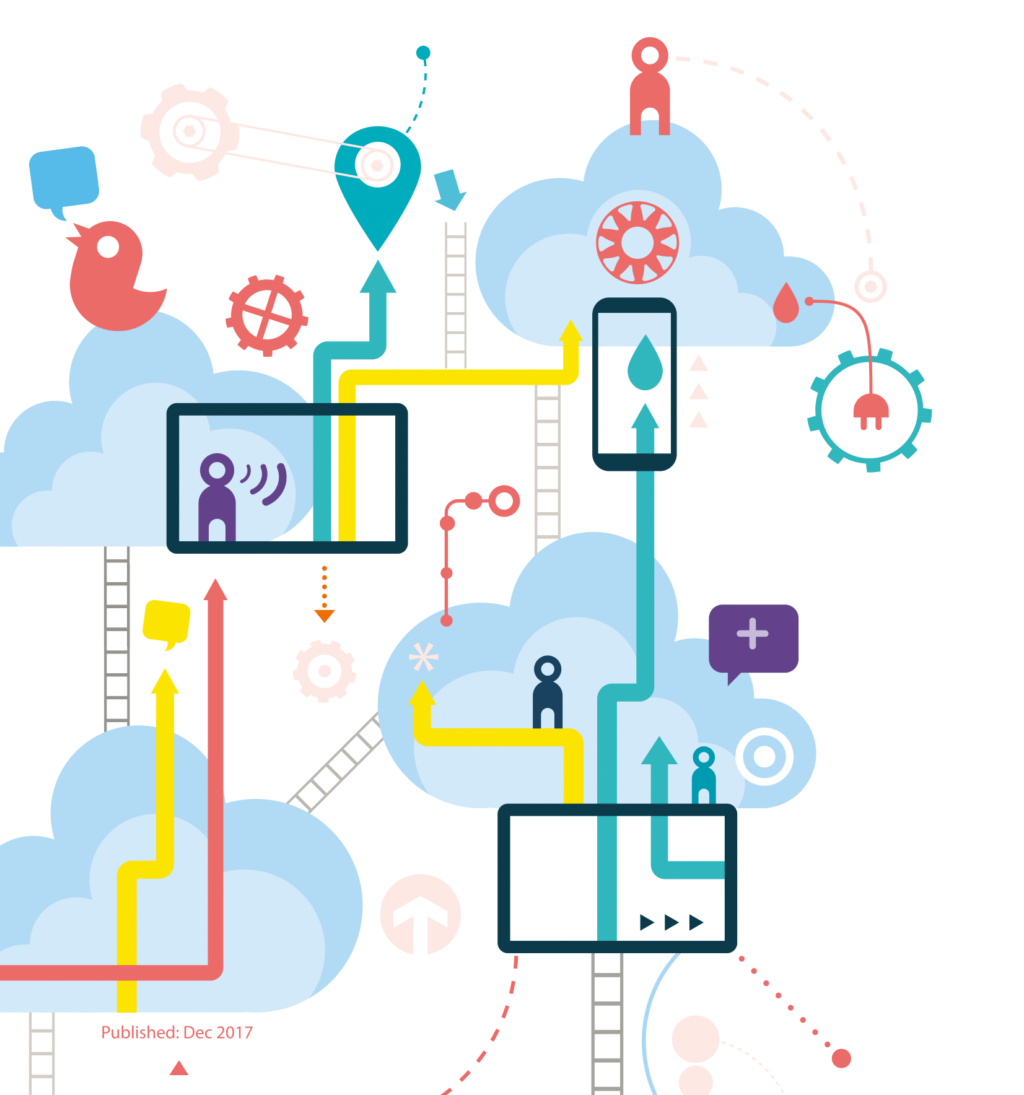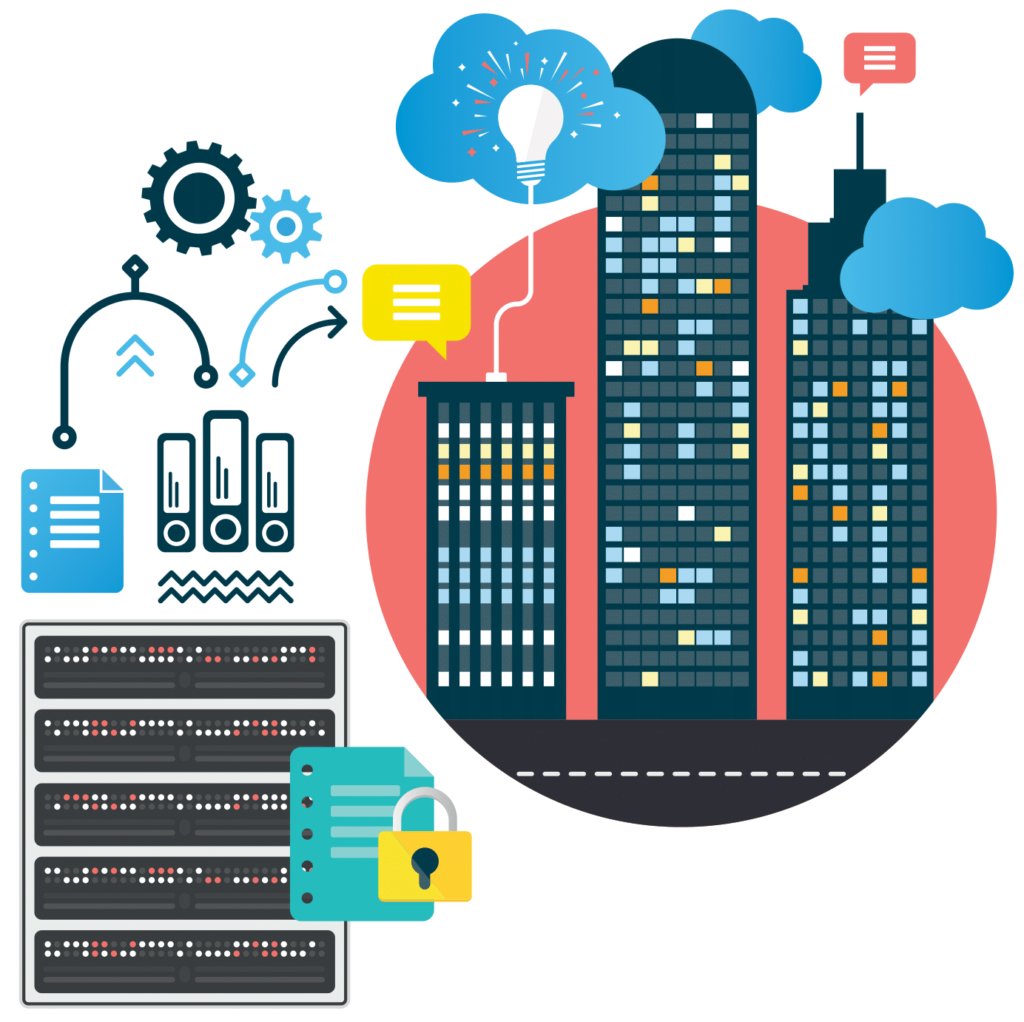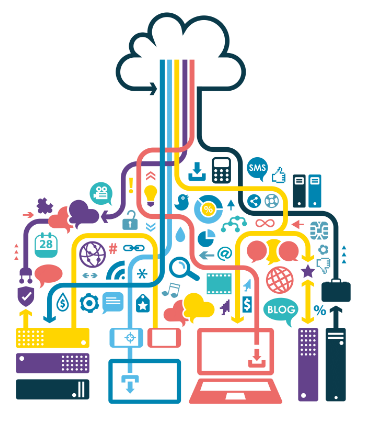Whitepaper: CRM systems: if you build it, will they use it?

If you pour tremendous amounts of time, resources and money into Customer Relationship Management (CRM) systems, you expect to see increased sales, better customer service and improved operating efficiency.
And, yes, the right CRM system can deliver on those goals. But only if you have achieved one key thing: user adoption.
According to Forrester, the technology analysts, 49% of CRM projects are threatened by low user adoption. The greatest single contributor to CRM project success is getting users on board. So, when you’re planning a CRM project, start by asking yourself these two questions:
- How will it benefit our team?
- Will it make their lives easier?
To improve productivity, users must understand the benefits and use the system on a daily basis. You must:
- Design your CRM platform with your specific users in mind
- Clearly communicate the benefits
- Teach them how to use it
- Make sure to get their buy-in
“What’s in it for me?”
Tailor your CRM for your users
Best practice suggests that your number one priority, when implementing a CRM plan, should focus on user adoption and ease-of-use. Yet so often this doesn’t happen.
What users need in a CRM system varies depending on their role and function. Let’s look now at sales, marketing and customer service teams.
Target sales with CRM
A great CRM system delivers transparency and clear visibility of sales cycles by tracking each prospect through every step of the selling pipeline from initial lead to purchase, helping your sales teams convert more leads into revenue.
Your CRM platform should reflect the needs of your individual salespeople and their own unique selling cycle. So, they may want easy access to:
- Current opportunities
- Qualified leads
- The next step in the cycle
- Follow-up communications
- Forecasting
It should help your sales team hit their revenue targets, reduce sales cycles, convert leads to sales and increase their commission.
Fail to accomplish these goals, and users will lose confidence and stop using the platform. They will fall back on the old legacy systems and manual processes.
Get it right, however, and your business will have a comprehensive lead management tool. With easy access to solid, reliable and trusted data in their pipeline, sales people can quickly get the customer information they need – all from the same place.
Automate sales admin
If sales teams spend hours every week on administrative tasks, it’s an expensive drain on productivity. Imagine the extra opportunities that could be won each month if sales had less admin.
An effective CRM strategy frees sales staff from the burden of admin tasks by minimising, or even removing, repetitive processes that steal time from the working day and contribute little to profitability.
A good CRM system cuts out a bulk of manual tasks: your sales team no longer has to create records, key in data or send forms to accounts for processing.
It also displays a personalised dashboard, so each member of your team can view and analyse relevant, real-time reports quickly and easily.
Manage and measure your marketing
In the past, marketing was viewed as an ambiguous cost that couldn’t be measured or tracked. Today, despite sophisticated databases, many marketers still can’t easily assess or quantify the success of their efforts. The inability to substantiate results impacts marketing budgets.
Creating and executing new campaigns is easier to justify when marketing can capture measurable results. When your CRM system is architected correctly, marketers can demonstrate solid reports on leads generated, opportunities converted, close rates and ROI. Comprehensive marketing reporting and analytics provides transparency into marketing
metrics, thus providing a clear view of how marketing and sales activities contribute to the company’s bottom line.
With better metrics on how campaigns are performing, marketing has insight into how to improve campaigns. Setting campaign goals and benchmarking results opens doors to new possibilities in marketing effectiveness.
The nimblest CRM applications are those that can be integrated with other tools including marketing automation software and e-marketing platforms.
With a great CRM system, your marketers can create compelling and high-impact campaigns. They can:
- Plan activities
- Develop contact lists
- Organise campaigns
- Implement programmes
- Measure the results
And where marketing previously had to run campaigns manually, they can now run automatically.
Because they have more details readily available than ever before, marketers can segment contacts to run personalised campaigns and reap higher conversion rates. The result: more campaigns can be run with fewer people, and deliver more qualified leads to your sales pipeline.
Customer service
What does your customer service team want from a great CRM system? Most likely:
- Customer information
- Case management
- Service history
- Support knowledge
Why?
So they can deliver consistent, efficient service that enhances customer loyalty and profitability.
A great CRM system makes addressing a customer issue so much easier, because all the detail your people need are instantly available in a single interface, from a single system. Customer issues and requests are resolved quickly and efficiently.
Automating service processes with a CRM system enables you to assign, manage and resolve support incidents with automated routing, support ticket queuing and escalation of service requests, along with case management, service level agreement management and auto-response e-mail. With all details available in one place, CRM systems make everyone accountable for customer service.
People are able to provide responsive, personalised service that increases case resolution and ultimately reduces customer churn. Unprecedented access to data transforms the customer’s overall experience.
When service staff see they have more tools and information at their disposal, they will be increasingly motivated to use the platform, because they recognise that CRM will help them do their job better and deliver superb service.
80% of executives say customer-facing strategies are high on their corporate agendas
– Source: Strativity Group
“It’s not relevant to how I work.”
2. Get employee input
CRM is a company-wide strategy that involves everyone who interacts with customers – either directly or indirectly. The most effective way of understanding what they need from a CRM system is simply to ask them at the start of the process. By including them, they won’t feel the organisation is imposing a new system. Instead, they can help drive change.
Gather both vertical and horizontal knowledge from within the company by including all key users – from project stakeholders to cross-functional employees who focus on day-to-day tasks. Ask questions about how CRM helps in them, what steps seem unnecessary and what changes or enhancements would make their jobs easier.
First, identify existing frustrations relating to data management and automation. The consultancy partner you work with can then design practical and functional CRM solutions to suit. Get users to test and pilot programmes for invaluable input into what does and doesn’t work for them.
For example, service teams are unlikely to need access to marketing campaign functions while sales teams probably won’t need access to marketing project tasks. These options can be hidden from users’ groups. Displaying only the functionality avoids overwhelming and confusing users with too irrelevant options. What’s more, your CRM interface should extend beyond individual user personalisation; it should also be designed to adapt dynamically, by role.
Your new CRM shouldn’t simply replicate current processes. The goal is to develop improved, more efficient processes. As a result of user input, a CRM system can be built with enhanced processes, refined
approaches and richer information that enthuses users, streamlines tasks, increases user productivity and ultimately improves ROI.
“Improved processes fostered by CRM can even reduce employee churn and be used as a basis for attracting high calibre staff.”
“Why do we need to change?”
3. Have a communication strategy
Sell the system internally
Change management is a big deal in any organisation. With change comes resistance. Many employees are set in their ways, comfortable with predictable routines and familiar tools. They see no need for change. Some will sit in the “we’ve always done it that way” category, while others will fear change.
Your workforce builds an opinion about the system before they ever use it. Some organisations mistakenly assume a new CRM platform will sell itself once the solution is rolled out, their message being, “We’ve got this great new CRM platform that everyone is going to start using. You will love it.”
Unfortunately, it’s not that easy.
Threats to CRM success
Forrester found the most significant barriers to be:
- Slow user adoption: 49%
- Inadequate attention paid to change management and training: 36%
- Difficulties in aligning the organisational culture with new ways of working: 15%.
– Source: Forrester
Lead by example
Successful CRM projects need visible buy-in from the top. Strong leaders will communicate the bigger picture, convey why change is needed and how it will positively impact the organisation as whole. Promote the CRM platform as an integral part of the company culture. Position it as an ongoing, value-driven process that is continually fine-tuned to benefit the entire organisation.
Improved processes fostered by CRM can even reduce employee churn and be used as a basis for attracting high calibre staff.
It requires a change in thinking and a change in behaviour. Leaders must be willing to lead by example to demonstrate how CRM helps every level of the organisation. A consistent positive attitude on the leader’s part inspires others. It is imperative that leaders are early CRM adopters themselves. Buy-in occurs at the highest levels of the company and filters down through the ranks.
Keep users in the loop
Keep users informed as the system nears completion, continuing to communicate how CRM will directly impact them. Before launch, stress that ongoing support training is available to guide them. Explain that trainers will work with them until they feel comfortable on their own. Then, follow up systematically to ensure that the change is happening. After the CRM ‘go live,’ schedule post-implementation sessions with teams and individuals. Gather user feedback and use this as the basis to apply CRM tweaks and begin prioritising new requirements.
Total number of sales organisations leveraging CRM increased to 83%
– Source: CSO Insights’ Annual Sales Performance Optimisation Study ‘14
“I don’t have time to learn a new system.”
4. Provide training
It is important that users’ first experiences are positive. If employees don’t learn how to use the system, it sits, untouched. Employees fall back into their old ways of finding information in disparate systems and using manual processes.
Employees can’t be given a one-hour course and expect to know how to use the CRM system. A leading package like Microsoft Dynamics 365 may be intuitive to any Office user, but don’t assume training is not important. Dynamics 365 has specific nuances and functions that require in-depth training, customised to specific roles.
So allocate time for training sessions at all levels, giving plenty of notice and planning staff coverage where needed. Make sure employees can focus without interruptions. They shouldn’t feel like training is delaying their work.
Choose a partner who will stand by you
Many consultancies will deploy a CRM system and leave you to your own devices, never to be seen or heard from again.
Project leaders need to think and invest beyond the CRM system introduction training. Take into consideration on-going needs and training that supports users throughout the lifecycle of the CRM project. Choose a proactive partner who is available to support you at every step and who fully understands your business and user challenges.
Introduction training ensures basic familiarisation with CRM menus, navigation and essential processes. After implementation, you can work with your consultancy partner to roll out further training that will develop users’ skill beyond the basics.
More advanced CRM topics and role-specific training builds confidence and competence, and keeps the users’ experience positive and their expectations met.
Leave training and support to the experts
With a professional CRM consultancy firm that offers managed support services, your employees have access to the training and support they need, anytime they need it. The initial knowledge they gained should be topped up with regular sessions to introduce and master more CRM functions, or recap learning points, helping them to achieve incremental gains with each session.
Ensure courses can be delivered face-to-face or remotely and be scheduled as hourly or full day sessions. Employees can also get assistance via ongoing email, telephone and remote dial-in support. Managed support service enables your organisation to regularly book “bite-size sessions” with their regular consultant who knows their system.
A managed agreement includes training hours to ensure that users have the resources they need to get the most from CRM, acquire new skills and unleash the potential of their CRM package.
Because CRM training hours are included in each managed agreement, users can quickly schedule additional tuition and consultancy advice without needing to apply for additional budget or raise a new purchase order.
Technical support
When users have a problem, they want answers right away. Ensure CRM technical support is always available via multiple sources and channels. Make it easy for users to connect with the right person and the right knowledge at the right time to answer their service needs.
Running a help desk probably isn’t your organisation’s core competency, and your resources are best focused on revenue-generating tasks. An inclusive managed CRM support service alleviates the burden of technical help from your business, and ensures your employees get all the help they need. A CRM consultancy partner who offers managed services will ensure:
- Your CRM system is running smoothly,
- Users experience minimal downtime
- All questions are answered and struggles addressed
- Your CRM fulfils its potential
Because managed support has a bank of consultancy hours, CRM administrators and authorised users can quickly allocate these resources to deal with changes that go beyond routine technical support. This time is already held in your account so it can be immediately allocated for your CRM partner to complete these tasks. There’s no need to get approval or apply for more budget. This is an ideal solution to help organisations evolve their CRM package over time.
Make sure your CRM solution is future-proof, scalable, agile and flexible enough to keep pace and adjust to changing needs.
- Seven of the top 10 Fortune 500 companies use Microsoft Dynamics 365
- Dynamics 365 serves more than four million users and over 40,000 organisations
- Dynamics 365 is deployed in more than 80 countries
– Source: Microsoft
“The requirement has changed. CRM is no longer meeting my needs.”
5. Review & implement change requests
As we’ve demonstrated, CRM projects don’t end when a new system is first implemented. They evolve over time in response to:
- Changing business strategies
- Shifts in operations
- New opportunities
- User requirements
The solution is to future-proof your investment. Your system should be scalable, agile and flexible enough to keep pace and adjust to meet changing needs. Even though an initially successful implementation of CRM can bring early payback, the initiative can still fall short of expectations if the system doesn’t adapt to change. Scalable CRM systems, like Dynamics 365, can easily:
-
Add new functions
-
Customise existing processes
-
Integrate with other data sources
All of which lead to long-term ROI.
User adoption success
Using the above techniques will help you focus on lowering operational costs to ensure your CRM investment positively impacts your bottom line. These
practises also greatly improve user adoption. Working with our CRM partner, you can be confident that if they build it, your people will use it.
Don’t settle for “good enough”
If you have an existing CRM system that isn’t delivering the results you need, a professional consultancy firm can help you achieve much more. It’s important you have accessible, reliable and expert advice to help your CRM system run smoothly.
Our CRM partner can protect your investment by developing and enhancing your present platform. This may involve upgrading to a newer version so you benefit from new features, and customising the database so teams benefit from a wider breadth of CRM functions – for example you may want to configure automated processes and report across more business areas.
The right CRM system can deliver on goals such as: increased sales, better customer service and improved operating efficiency – but only if one key component is accomplished: user adoption.
Five steps to securing CRM user adoption



